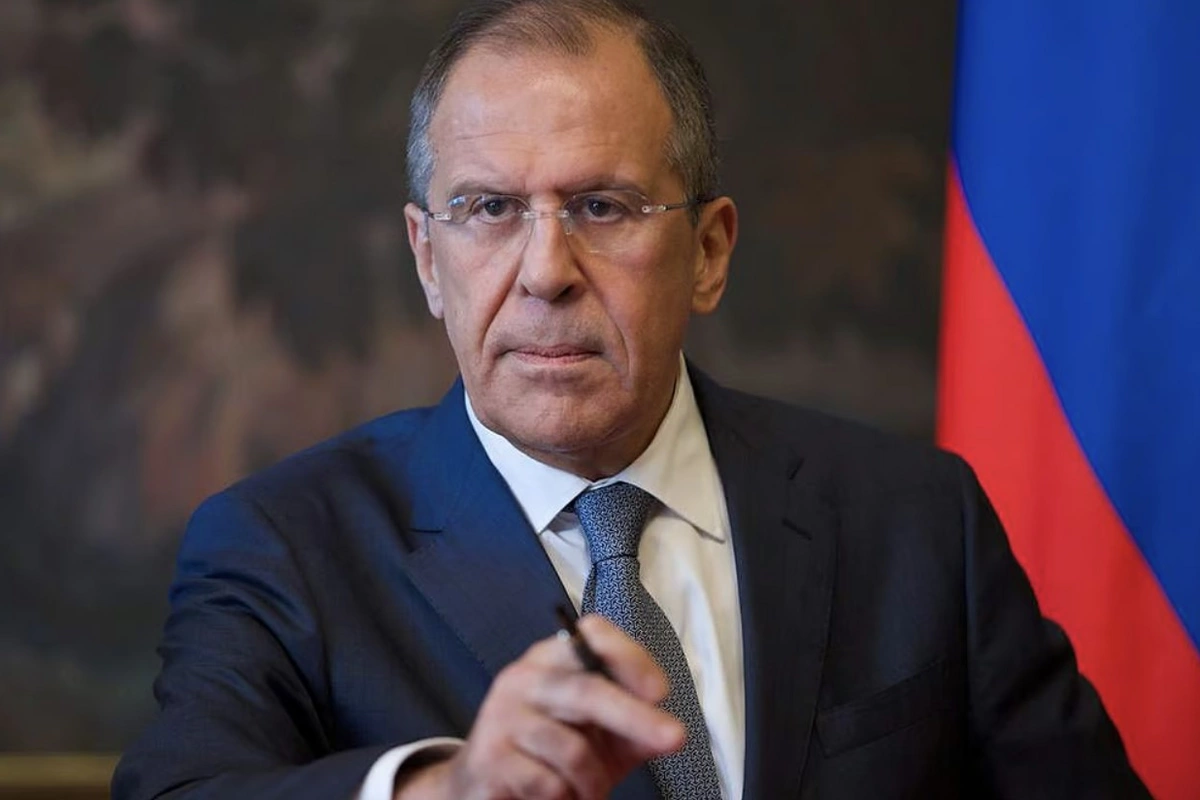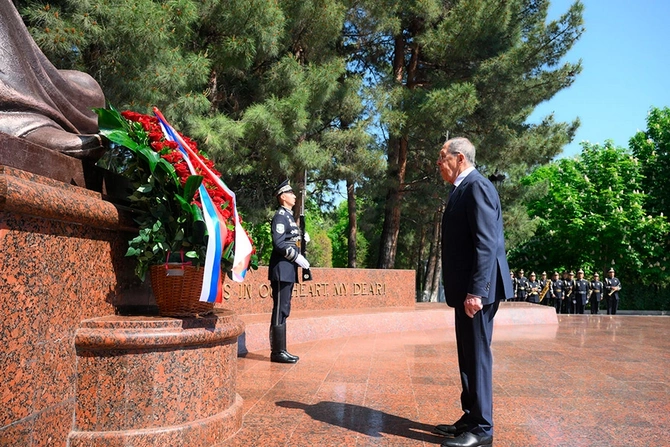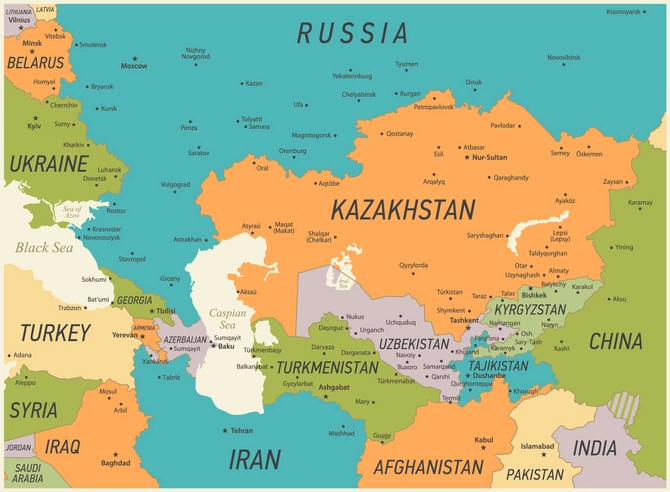
Photo credit: AP
Russian Foreign Minister Sergey Lavrov’s recent visit to Uzbekistan, meant to underscore deepening bilateral ties, ended up revealing a more complex undercurrent: the increasingly sensitive role of the Russian language in Central Asia’s shifting geopolitical landscape.
At a press briefing following his trip, Lavrov praised President Shavkat Mirziyoyev’s efforts to preserve “interethnic harmony” and reinforce the role of the Russian language in Uzbek society. He highlighted Moscow’s support for Uzbekistan’s “Russian Language Support Program” across preschool and secondary education, calling Russian a “tool of interethnic communication” and a legacy of Russia’s “cultural and historical presence.”
But what caught the public’s attention was not just his policy support - it was his comment on the absence of a Russian-language inscription at the “Grieving Mother” war memorial in Samarkand. Lavrov, after noticing that the monument bore inscriptions only in Uzbek and English, remarked on the omission of Russian. That seemingly minor observation sparked a wave of criticism in Uzbekistan, raising questions about sovereignty, language policy, and post-colonial memory.

Russian Foreign Minister Sergey Lavrov visits "Mourning Mother" (Memorial Grieving Mother) monument in Samarkand. Photo: RBC
Uzbek parliamentarian Odiljon Tojiev responded pointedly, writing that the Uzbek people “choose a language as an opportunity, not an obligation,” warning that “artificial promotion of a foreign language breeds hostility, not affection.” Journalist Almat Azadi went further, calling Lavrov’s comment “inappropriate” and “contrary to the principle of equality between sovereign states.” For Azadi and others, Russia’s assumption that it can dictate language policy - even symbolically - recalls uncomfortable echoes of imperial influence.
Indeed, these reactions reflect a deeper unease. Russian remains widely spoken in Uzbekistan, and linguistic ties with Moscow are undeniable. Yet there is a growing sensitivity to perceived impositions - especially when framed as expectations from a former hegemon. The suggestion that monuments must carry Russian inscriptions is seen by many not as cultural outreach, but as interference.
Lavrov’s emphasis on language did not happen in a vacuum. His trip followed shortly after the EU-Central Asia summit in Samarkand, where a strategic partnership agreement was signed between Brussels and Central Asian nations. Against this backdrop, Lavrov reiterated Moscow’s rejection of what he called “politicized cooperation,” implicitly accusing the West - particularly the EU - of pushing anti-Russian agendas in the region.
Moreover, Lavrov highlighted Russia’s vision for a “Greater Eurasian Partnership,” aligning Uzbekistan with platforms like the EAEU, the SCO, and the CIS. It is in this broader context of integration - and rivalry - that Lavrov’s cultural signaling around the Russian language must be understood.

Getty images
Central Asia is becoming a new frontline of influence, with Russia, China, the EU, and others vying for strategic positioning. Transport corridors, energy projects, and political alliances are in play - and so too is language. For Moscow, Russian remains a soft power asset. For Tashkent, it’s increasingly a matter of choice, not obligation.
The episode reveals the delicate balance Uzbekistan must strike. While engaging with traditional partners like Russia, it is also asserting its sovereignty and crafting a national identity grounded in cultural independence. Lavrov’s remarks, however well-intentioned, were a reminder that even language can become a geopolitical fault line.
Share on social media